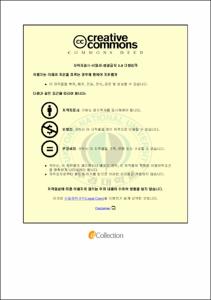확장된 TAC평가 모델개발을 통한 한국형TAC연구(생물학적 상호작용 및 어업간 혼획을 중심으로)
- Abstract
- ABSTRACT
In order to overcome several limitations with the current Korean TAC assessment model, the study suggested several theoretical approaches with related to biological, technical, and economic interactions among multi-species and multi-gears.
It necessarily consider ABC estimation considering biological or technical interactions that can take place among multi-species and multi-gears.
In addition, the paper suggested basic structures of extended models and analysis methods of the other two models, a single species by multi-gears and multi-species and multi-gears. These two models used biomass dynamic models with related to surplus production and Fox models based on fishing ratio of individual fishing gear, and the empirical dynamic optimization model with biological sector and economic sector respectively.
Basing on data such as economic parameters and biological parameters estimated by TACAMs. Also, the models can not only cut back on problems such as bycatch, discarding, and highgrading by adopting TAC to multi-species, but more accurately estimate the TAC level of each species.
Another advantage of the models has not only a merit that can increase in total surplus of Korean fisheries industry, but also another merit that reduces biological loss of resource stock for multi-species.
Finally, developmental suggestions from this study are as follows.
First, before Korean government adds multi-species and multi-gears to the list of TAC species and fisheries, the government needs to accumulate biological and economic data with related to TACAM of multi-species and multi-gears, and also needs to set TAC of each species targeted of multi-species and multi-gears considering biological and technical interactions. secondly the government needs to review net profit of individual fishing gear based on MEY and MSY (or TAC) obtained from TACAMs for three types (multi-species and a single gear, a single species and multi-species and multi-species and multi-gears) provided from this study.
- Issued Date
- 2011
- Awarded Date
- 2011. 8
- Type
- Dissertation
- Publisher
- 부경대학교
- Alternative Author(s)
- Yi Bom
- Department
- 산업대학원 생물자원학과
- Advisor
- 유명숙
- Table Of Contents
- 목 차
제1장 서 론 1
1. TAC 제도의 목표 및 기능 1
2. 연구의 배경 및 필요성 4
3. 연구의 범위 및 방법 6
제2장 확장된 TAC평가모델 개발의 이론적 접근 9
1. 다수어종에 대한 정태적 접근(유한해석) 10
1) 기술적 상호작용에 의한 혼획 10
(1) 다수어종·단일어업의 가상적 단순 모델 10
2) 생물적 상호작용 - 경쟁적 공존 및 배제 15
(1) 다수어종·단일어업의 가상적 모델 - 경쟁적 공존 모델 15
(2) 다수어종·단일어업의 가상적 모델 - 경쟁적 배제 모델 18
제3장 TAC제도 평가의 해외사례 22
1. 뉴질랜드 22
2. 일본 - 후쿠오카현 중소형 선망어업 23
3. 미국 24
4. 아이슬란드 25
제4장 TAC제도 평가기준 및 항목 26
1. TAC제도 평가기준(Assessment Category) 26
1) TAC제도 평가기준 26
2) 지속가능성(Sustainability) 27
3) 효율성(Efficiency) 27
4) 공평성(Equity) 27
5) 적용 가능성(Adaptability) 28
제5장 자원 생물학적 평가부문의 확장된 TAC평가 모델의 도입을 통한 한국형 TAC제도 연구 32
1. TAC제도 연구 32
1) TAC제도 평가시스템 32
2) TAC제도 평가단계 35
(1) 이론적 분석 35
(2) 평가설계 35
(3) 조사 및 평가 36
(4) 비교분석 37
(5) 평가결과도출 38
3) TAC제도 평가방법 38
(1) 체크리스트법(Checklist approach) 39
(2) 비교연구법(Comparative approach) 39
(3) 시뮬레이션법(Simulation approach) 41
(4) 설문조사법(Survey approach) 42
2. 자원 생물학적 평가의 확장된 TAC평가 모델의 도입 42
1) 자원생물학적 평가 42
2) 자원생물상태 평가 43
제6장 결 론 45
참고 문헌 47
고등어에 대한 어획동향 및 자원평가 결과 3
2010년, 2011년도 ABC ,TAC량 3
TAC제도 평가기준 및 평가항목 31
국가간 비교분석 예시 40
자원생물학적 확장된 평가 43
자원생물상태 평가 예시 44
[그림 1] 고등어의 적정어획량 산출을 위한 생물학적기준점 2
[그림 2] 기술적 상호작용을 가진 다수어종·단일어업에 대한
가 상의 모델 12
[그림 3] 생물적 상호작용(경쟁적 공존)을 가진 다수어종·단
일어업에 대한 가상의 모델 16
[그림 4] 생물적 상호작용(경쟁적 배제)을 가진 다수어종·
단일어업에 대한 가상의 모델 20
[그림 5] 어획노력량과 소득상실 관계 29
[그림 6] TAC제도 평가시스템 34
[그림 7] TAC 제도 평가설계 36
- Degree
- Master
- Files in This Item:
-
-
Download
 확장된 TAC평가 모델개발을 통한 한국형TAC연구(생물학적 상호작용 및 어업간 혼획을 중심으로).pdf
기타 데이터 / 2.38 MB / Adobe PDF
확장된 TAC평가 모델개발을 통한 한국형TAC연구(생물학적 상호작용 및 어업간 혼획을 중심으로).pdf
기타 데이터 / 2.38 MB / Adobe PDF
-
Items in Repository are protected by copyright, with all rights reserved, unless otherwise indicated.